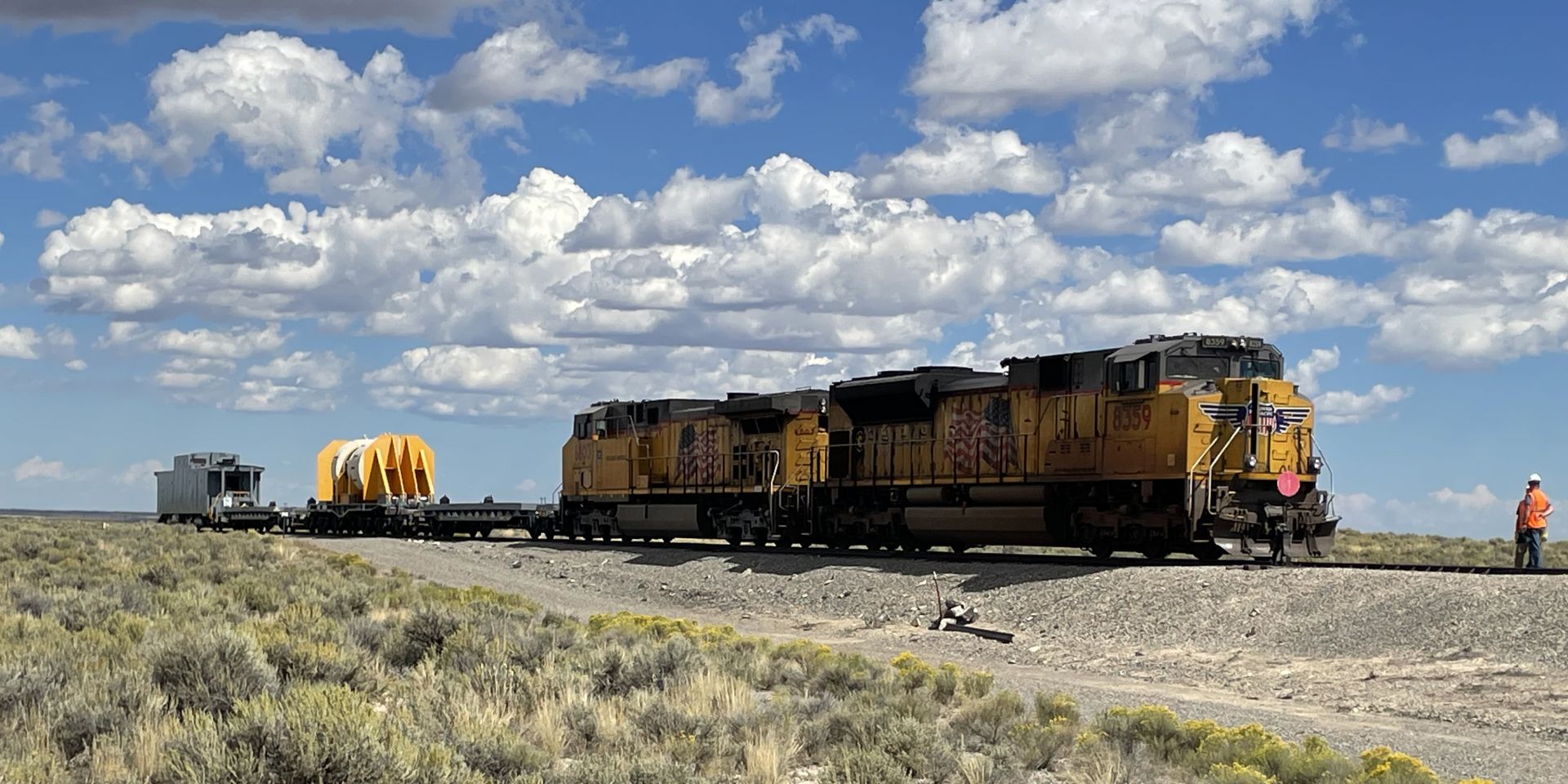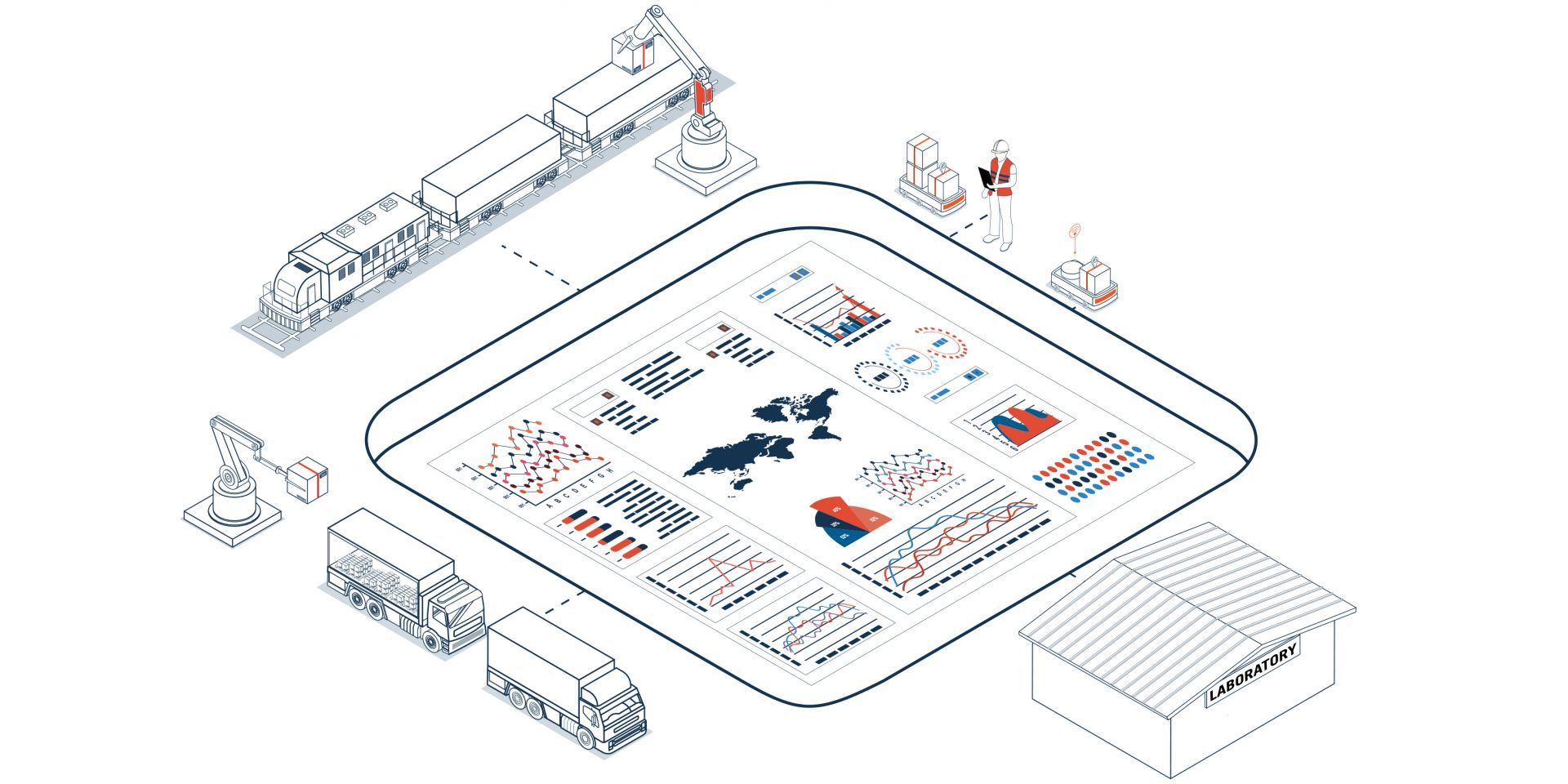April 16, 2025, 3:39PMRadwaste SolutionsRichard “Ricky” Furr, Larry McDougal, and John Mayer The CR-3MP is loaded on the barge at the Crystal River-3 site in Florida on January 17, 2024. (Photos: Orano DS)
The Optimized Segmentation process patented by Orano Decommissioning Services was successfully implemented for the first time at the Crystal River Unit 3 (CR-3) decommissioning project in Florida [1]. Using this approach, Orano was able to avoid the time- and resource-intensive process of packaging components into numerous standardized waste containers and significantly reduced the required segmentation activities.
The DOE designed the Atlas railcar to eventually ship spent nuclear fuel to consolidated storage. Before it begins shipping fuel, the department wants to demonstrate the safety of transportation casks through its Package Performance Demonstration project. (Photo: DOE)
Inspired by a history of similar testing endeavors and recommended by the National Academy of Sciences and the Blue Ribbon Commission on America’s Nuclear Future, the Department of Energy is planning to conduct physical demonstrations on rail-sized spent nuclear fuel transportation casks. As part of the project, called the Spent Nuclear Fuel Package Performance Demonstration (PPD), the DOE is considering a number of demonstrations based on regulatory tests and realistic transportation scenarios, including collisions, drops, exposure to fire, and immersion in water.
The Atlas railcar carries a test load simulating a shipment of spent nuclear fuel. (Photo: DOE)
The Department of Energy’s Office of Nuclear Energy has wrapped up testing of its Atlas railcar, successfully completing a round-trip journey from Pueblo, Colo., to Scoville, Idaho. Built to safety standards set by the Association of American Railroads (AAR), the 12-axle railcar is designed to transport large containers of spent nuclear fuel and high-level radioactive waste.
Rendering of the Thor and Sif concept cruise ships. (Image: Ulstein)
The Norwegian shipbuilding company Ulstein has developed a design concept for a cruise ship fueled by a molten salt nuclear reactor. In the company’s concept, the 500-foot-long, 60-passenger ship, named Thor—in reference to the Norse god as well as the thorium used in the reactor core–would generate its electricity with the onboard reactor. The ship would also serve as a charging station for a fully electric companion ship named Sif, named after the goddess who was Thor’s wife.
As demands for a comprehensive U.S. waste management plan increase, private vendors are certifying new SNF/HLW transportation cask designs.
A large-scale campaign to move spent nuclear fuel and high-level radioactive waste in the United States to a central repository or interim storage site does not appear to be coming anytime soon. External pressures, however, including a growing number of nuclear power plant closures and increased stakeholder demand to remove stranded spent fuel and HLW, are shifting focus to building the infrastructure needed to move large volumes of waste. This includes the design and manufacture of shielded transportation casks for shipping the waste by truck or rail.
The NWTRB offers findings and recommendations to the DOE on technical issues that need to be addressed in preparing for an integrated, nationwide program to transport nuclear waste.
The U.S. Nuclear Waste Technical Review Board (NWTRB or Board) recently completed an evaluation of Department of Energy activities related to transporting spent nuclear fuel (SNF) and high-level radioactive waste. These topics have been the subject of several Board meetings and associated reports, and in September 2019, the Board issued a report, Preparing for Nuclear Waste Transportation–Technical Issues That Need to Be Addressed in Preparing for a Nationwide Effort to Transport Spent Nuclear Fuel and High-Level Radioactive Waste [1], which focuses on the issues DOE will need to address to plan and implement an integrated transportation program. In its report, the Board describes 30 broad technical issues that DOE needs to address and offers three sets of findings and recommendations.








